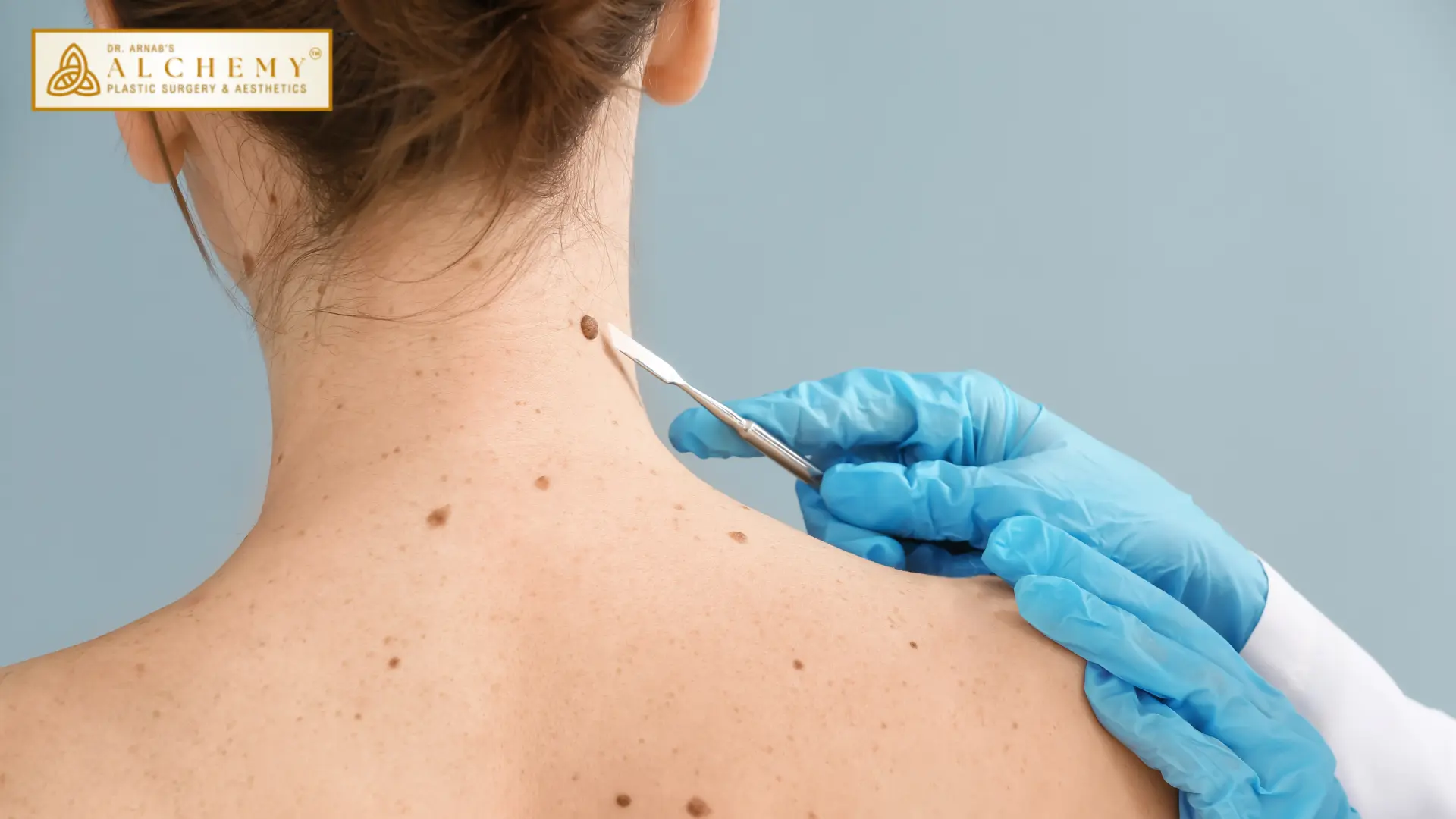
Moles are pigmented spots on the skin that can vary in size, shape, and color. While most moles are harmless, some individuals may choose to have them removed due to concerns about their appearance, changes in size or shape, or for diagnostic purposes.By understanding the procedure, recovery process, and potential risks associated with mole excision, you can make informed decisions about the treatment of your moles.
About The Procedure
Mole excision is a straightforward procedure that involves the surgical removal of a mole. Here's an overview of the process:
a) Consultation: A consultation with a qualified healthcare professional is essential to evaluate the mole, discuss your concerns, and determine if excision is necessary or appropriate.
b) Local Anesthesia: Before the procedure, a local anesthetic is administered to numb the area surrounding the mole. This ensures that you remain comfortable during the procedure.
c) Excision: The mole is then surgically removed using various techniques, such as surgical excision, shave excision, or laser excision. The method used depends on factors such as the size, depth, and location of the mole.
d) Closure: Following the removal of the mole, the wound is closed using sutures, adhesive strips, or a combination of both. The choice of closure method depends on the size and location of the excised mole.
Recovery
After mole excision, proper care is crucial for optimal healing. The recovery process typically involves:
a) Wound Care: You will receive specific instructions on how to care for the wound, including keeping it clean and dry, changing dressings as directed, and applying any prescribed ointments or creams.
b) Activity Restrictions: It is advisable to avoid strenuous activities, excessive stretching, or movements that may strain the incision site during the healing period.
c) Scarring: All surgical procedures involve some degree of scarring. However, with proper wound care and time, most scars from mole excision fade and become less noticeable over time.
Risks
Mole excision is generally a safe procedure, but like any surgical intervention, there are potential risks and complications to be aware of, including:
a) Infection: Although rare, there is a risk of infection at the excision site. Following proper wound care instructions and promptly reporting any signs of infection to your healthcare provider can help mitigate this risk.
b) Scarring: While efforts are made to minimize scarring, some individuals may develop noticeable or keloid scars. Factors such as the size and location of the mole, as well as individual healing responses, can influence scarring outcomes.
c) Bleeding or Hematoma: In rare cases, bleeding or hematoma (a collection of blood) may occur at the excision site. Applying pressure to the area and seeking medical attention if excessive bleeding persists is important.
d) Recurrence: There is a slight possibility of mole recurrence, particularly if the mole was not entirely removed during the initial excision. Regular skin examinations and follow-up appointments with your healthcare provider can help monitor any changes or new growths.
Visit Our Clinic
Monday 5:00 PM – 8:00 PM
Tuesday 5:00 PM – 8:00 PM
Wednesday 5:00 PM – 8:00 PM
Thursday 5:00 PM – 8:00 PM
Friday 5:00 PM – 8:00 PM
Saturday 5:00 PM – 8:00 PM
Sunday 10:00 AM – 12:00 PM

Take A Step Forward To Perfection
Choose to transform your life, and embrace the extraordinary.
Quick Contact
- (+91) 8460128511
- info@alchemyplasticsurgery.com
- 202, Silver House, Opp. GEB School, Akota, Vadodara, Gujarat, India
